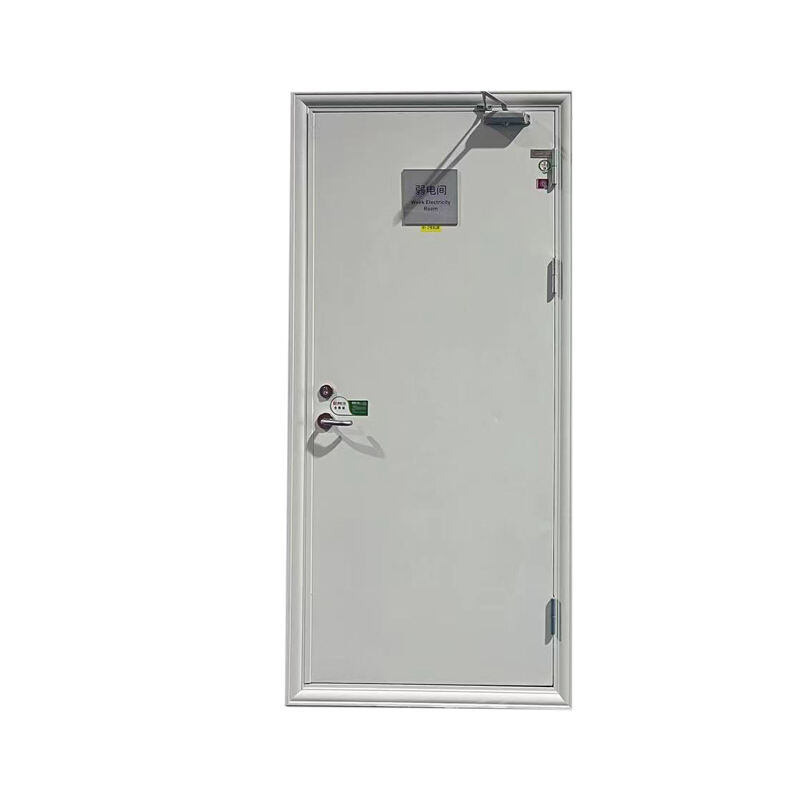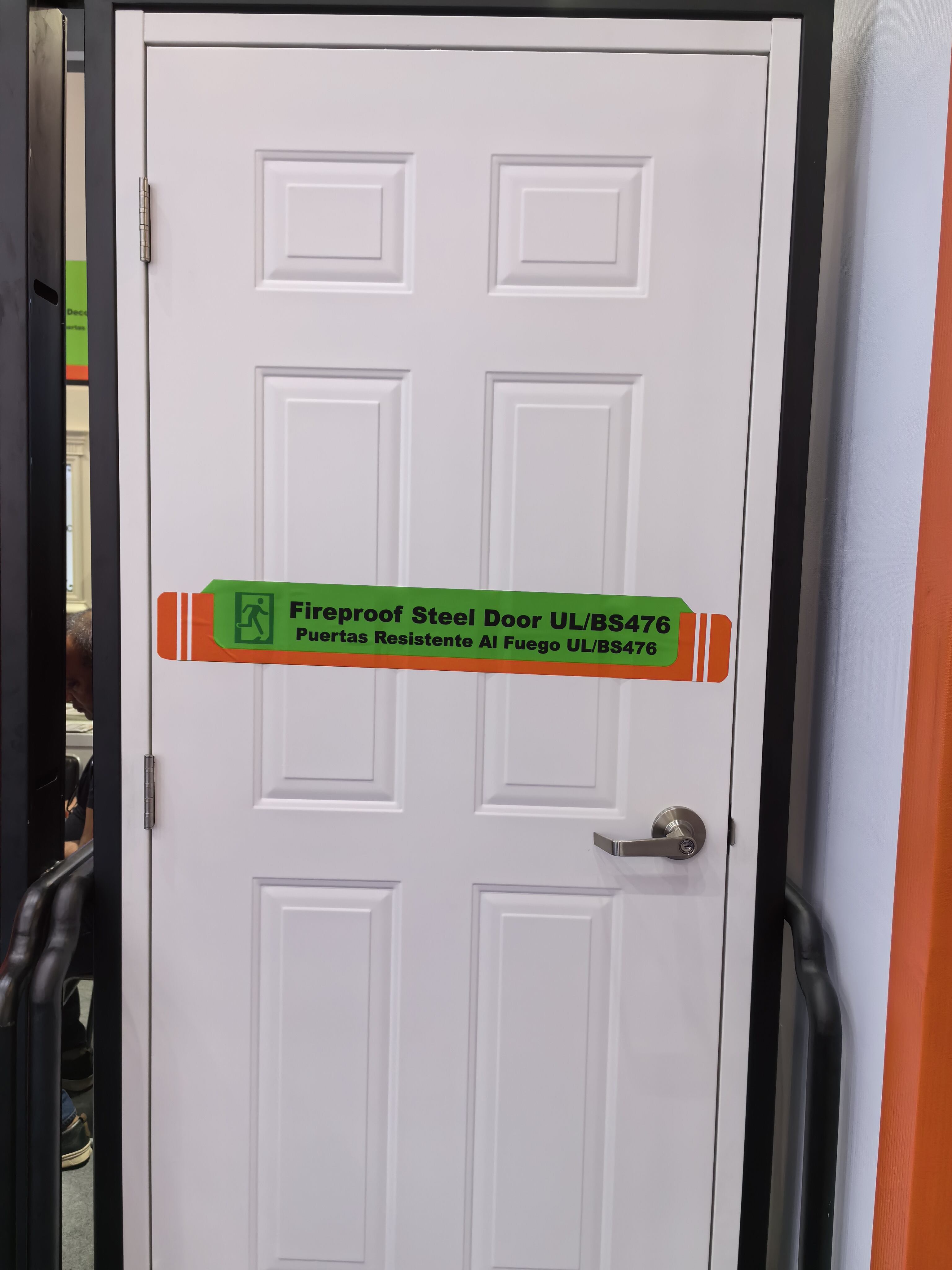How Do Fireproof Doors Help Prevent the Spread of Smoke and Fire?
In the field of commercial and residential building safety, few features are as crucial as fire prevention systems. Alarms, sprinklers, extinguishers, and emergency exits all contribute to saving lives and minimizing damage during a fire. Yet one of the most underestimated but highly effective components of these systems is the fireproof door. More than just barriers, fireproof doors are engineered to slow down or completely block the spread of flames and smoke. Their presence in buildings is not merely a legal requirement but a practical safeguard that provides occupants with critical time to escape and emergency services with time to respond.
This article explores in depth how fireproof doors prevent the spread of smoke and fire. It looks at their design, materials, testing standards, and installation strategies, while also examining the science of how fire and smoke move through buildings. By understanding the protective role of fireproof doors, building owners, managers, and designers can appreciate why they are indispensable in modern safety planning.
Understanding the Nature of Fire Spread
To appreciate the importance of fireproof doors, it is necessary to understand how fire spreads. Fires move through three main mechanisms: direct flame contact, radiant heat transfer, and the movement of hot gases and smoke. Once a fire starts, it seeks oxygen, and air movement carries flames and smoke into adjacent rooms or corridors. Without barriers, fire can engulf entire floors of a building within minutes.
Smoke, often deadlier than flames, moves even faster. Hot gases rise and spread horizontally through openings, stairwells, and ventilation systems. In many cases, inhalation of toxic smoke is the leading cause of fire-related fatalities. Controlling both flames and smoke is therefore central to fire safety planning, and fireproof doors are designed specifically for this task.
How Fireproof Doors Are Constructed
Fireproof doors are not ordinary doors. They are built with specialized materials that resist ignition and insulate against extreme heat. Common materials include steel, gypsum, fire-resistant glass, and specially treated timber. The door leaf, frame, and core are all designed to withstand fire for a specified duration, often ranging from 30 minutes to 3 hours.
Beyond structural resistance, fireproof doors also incorporate seals. Intumescent seals expand when exposed to high temperatures, filling any gaps between the door and the frame to block flames. Smoke seals, usually made of rubber or brush materials, close the gaps even before high heat develops, preventing the passage of toxic gases. These combined systems make the door effective against both fire and smoke.
The Role of Fireproof Doors in Compartmentation
One of the key strategies in fire safety is compartmentation—the division of a building into sections or zones that contain fire within limited areas. Fireproof doors are essential in creating these compartments. By closing off rooms, corridors, or stairwells, they prevent fire and smoke from spreading unchecked.
For example, in a multi-story office building, fireproof doors installed in stairwells ensure that escape routes remain usable. In a hospital, fireproof doors separate wards, giving staff more time to evacuate patients. Without such barriers, flames and smoke would spread rapidly, overwhelming occupants and responders alike.
Delaying Flame Spread
When flames encounter a fireproof door, the materials of the door absorb and resist heat for a specified duration. Steel or gypsum cores maintain their structural integrity even as temperatures climb. This delay prevents flames from moving to other parts of the building.
Importantly, this resistance is measured through rigorous testing. Fireproof doors are certified based on how long they can prevent fire penetration, giving building occupants a defined window of safety. Whether the rating is 30, 60, or 120 minutes, that time is invaluable for evacuation and firefighting efforts.

Preventing Smoke Movement
As mentioned earlier, smoke often poses greater dangers than flames. Fireproof doors with smoke seals prevent smoke from leaking into protected areas such as corridors and stairwells. By stopping smoke infiltration, these doors maintain visibility in escape routes and prevent occupants from inhaling toxic gases.
This function is especially critical in high-rise buildings, hotels, and healthcare facilities, where safe evacuation routes are essential. Even if flames are not yet present, smoke can incapacitate people within minutes. Fireproof doors protect against this by ensuring separation between burning and safe zones.
Automatic Closing Mechanisms
A fireproof door is only effective when closed. For this reason, most fireproof doors are equipped with self-closing mechanisms. In normal daily use, they may remain open for convenience, often held by magnetic catches linked to the fire alarm system. When the alarm triggers, the magnets release, and the doors close automatically, sealing off compartments.
This automatic action ensures that human error does not compromise safety. Even if no one is available to close the door manually, the system ensures that the barrier is in place exactly when it is needed.
Supporting Firefighting Operations
Fireproof doors not only protect occupants but also aid firefighters. By containing the fire within limited areas, they make it easier for emergency teams to assess and manage the situation. A compartmentalized building allows firefighters to approach the fire strategically, preventing rapid escalation and reducing risk to personnel.
Additionally, by slowing fire growth, fireproof doors buy valuable time for firefighters to deploy resources and contain the blaze before it spreads uncontrollably.
Compliance with Safety Standards
Fireproof doors are regulated by strict safety standards and building codes. Authorities require their installation in critical areas such as stairwells, corridors, and escape routes. These codes are based on years of research and real-world fire data, ensuring that the doors installed in modern buildings perform reliably during emergencies.
Failure to comply with these requirements not only endangers lives but also exposes building owners to legal liability. Insurance claims may also be jeopardized if fireproof doors were not properly installed or maintained. Compliance is therefore both a safety measure and a legal necessity.
Additional Benefits Beyond Fire Safety
While their primary role is to prevent the spread of fire and smoke, fireproof doors also provide secondary benefits. Their robust construction often improves sound insulation, creating quieter indoor environments. Many fireproof doors are also energy-efficient, helping to regulate indoor temperatures by reducing drafts and heat transfer.
Furthermore, modern fireproof doors are designed with aesthetics in mind. They can be manufactured in a variety of finishes, from wood veneers to glass panels, allowing them to blend seamlessly with interior design while still providing vital protection.
Maintenance and Inspection
For fireproof doors to perform their role effectively, regular maintenance is required. Seals must be intact, closing mechanisms functional, and door frames free from damage. Routine inspections ensure that the doors will operate as intended during an emergency.
Neglected fireproof doors may appear functional but fail during a fire. For example, worn seals can allow smoke to penetrate, or damaged hinges can prevent full closure. Building owners must therefore incorporate regular door checks into their safety protocols.
Case Examples of Fireproof Door Effectiveness
History provides many examples of fireproof doors saving lives and property. In several hotel fires, properly installed fireproof doors kept stairwells clear, allowing guests to evacuate safely. In office buildings, they have prevented entire floors from being consumed, confining damage to a single room.
These real-world cases underline the importance of fireproof doors not just as theoretical safety measures but as proven lifesaving barriers.
Conclusion
Fireproof doors are indispensable in modern building safety. They prevent the spread of fire by resisting heat and flames, and they stop smoke from entering safe areas with seals and automatic closing systems. By enabling compartmentation, they ensure that occupants can evacuate safely and firefighters can operate effectively.
Beyond their safety role, fireproof doors also contribute to compliance with building codes, reduce liability, and even enhance comfort through insulation and noise reduction. Their installation is not simply about meeting legal requirements but about providing a real, practical safeguard for lives and property.
In any commercial or residential building, investing in fireproof doors is one of the most effective steps toward comprehensive fire safety.
FAQ
How long can fireproof doors hold back fire?
Depending on their rating, fireproof doors can resist fire for 30 minutes to 3 hours, giving occupants and firefighters crucial time.
Do fireproof doors stop smoke as well as flames?
Yes, many fireproof doors include smoke seals that prevent toxic gases from spreading into escape routes.
Are fireproof doors required in all buildings?
Building codes generally mandate fireproof doors in commercial and multi-story residential buildings, especially around stairwells and corridors.
Can fireproof doors be left open during normal use?
They may be held open with magnetic catches, but these release automatically during a fire alarm, ensuring the door closes when needed.
Do fireproof doors affect the appearance of a building?
Modern fireproof doors are available in many finishes, allowing them to match interior aesthetics while maintaining safety standards.
Table of Contents
- How Do Fireproof Doors Help Prevent the Spread of Smoke and Fire?
- Understanding the Nature of Fire Spread
- How Fireproof Doors Are Constructed
- The Role of Fireproof Doors in Compartmentation
- Delaying Flame Spread
- Preventing Smoke Movement
- Automatic Closing Mechanisms
- Supporting Firefighting Operations
- Compliance with Safety Standards
- Additional Benefits Beyond Fire Safety
- Maintenance and Inspection
- Case Examples of Fireproof Door Effectiveness
- Conclusion
- FAQ

